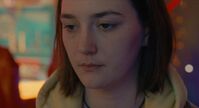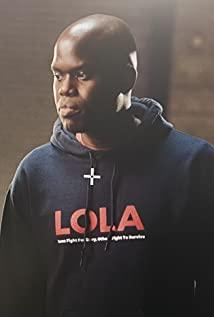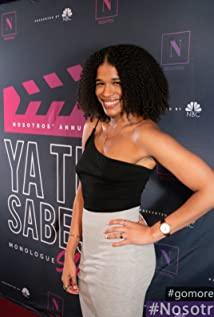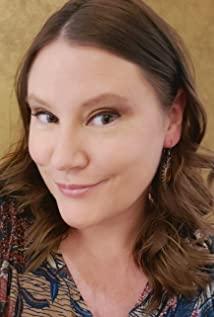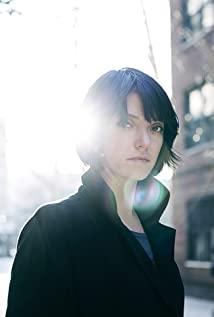"Never Rarely Sometimes Always" (quoted as "NRSA") opens with a disastrous high school talent show. On the simple stage, the students went into battle one after another, with cheesy shapes and clumsy performances. The audience was crowded with parents who were also slovenly and with blank expressions. When the girl sang the original love song solo, a loud male voice suddenly scolded: "Slut!"
In just two and a half minutes, director Eliza Hittman brings out the closed, outdated, decades-long, but not in the least hegemonic or hostile situation of rural America in a way that is bluntly comical. This is the everyday environment in which heroine Autumn (Sidney Flanigan) finds herself.
This kind of naturalism, which has been repeatedly mentioned in many industry evaluation systems such as the Sundance Film Festival, Berlin Film Festival, and New York Film Critics Association Awards, has been highly recognized. In fact, it runs through the entire film. Under the grand proposition of "gender discourse", which has tended to be flooded in recent years, Hittman chose to carry out a small and narrow narrative, giving the whole film the texture of Verité. Among them, the multiple metaphors are particularly worthy of attention. We can think that the use of metaphors in the narrative and thematic interpretation of "NRSA" nurtures its authenticity as a growth story film and a profile of gender power relations, and also provides a meaningful reflection on the image representation itself. 's gaze.
"NRSA" tells the story of Autumn, a 17-year-old country girl who finds out she is pregnant unexpectedly, but has to travel to New York with her cousin Skylar (Talia Ryder) because Pennsylvania law prohibits the provision of abortions to women without the consent of their guardians. Abortion. Hittman's script is stingy, she's savvy, and she's reluctant to divulge information to the audience. Therefore, the film refuses to go into any detail about Autumn and Skylar's upbringing, male characters in their lives, and sisterhood. Shot in a large number of 16mm handheld shots, it is always from Autumn's subjective point of view, experiencing the world and every event around it, and the audience has never been able to understand more than Autumn, or even the full depth of her emotions.
Hittman's concealment in the visual narrative echoes the fact that Autumn needs to conceal the pregnancy, and also symbolizes the group loneliness of young girls in an institutionalized patriarchal society. An atmosphere of opposition emerges: the girl is reticent, the uninvited male gaze is deafening; the small town is static, but the need for abortion is increasingly urgent; the metropolis is colorful, the light and color are It's not about the girls who are anxious and needy; there are so many troubles to solve and so few options available. The limited perspective offered by Hittman sweeps through immediate observations and individual experiences of American society. Bus stations and subways are the epitome of public spaces, extending in all directions and constantly flowing, but women find it difficult to move, trapped in social systems or cultural values, and have little way out. Because of its privacy, "NRSA" is even arguably more expensive than "4 Months, 3 Weeks and 2 Days" (2007)
April three weeks and two days are more intense. Compared with Hittman's two youth feature films in the prelude, they are also improved in anxiety and on-camera expressiveness.
The female body is undoubtedly at the heart of the expression "NRSA". The film takes the right of reproductive choice as an entry point and goes straight to the depths of the predicament of the female subject. DP Hélène Louvart continues her penchant for close-up and fluidity in "Happy as Lazzaro" (2018) and "Beach Rats" (2017), which is seen in several sequences of the film, such as Autumn's nose piercing with a pin , hammering the lower abdomen, and singing restlessly and firmly on KTV in New York late at night, are particularly prominent. In the small town Crisis Pregnancy Centre, when the ultrasound doctor said, "This is the most magical sound you will ever hear," the hollow and strange fetal heart beat came, Autumn frowned and turned away. Near-radical disintegration of the supposed, socially constructed maternity radiance.
On the other hand, the female body in Hittman's vision is also an experimental field, and what she sees is the possibility of a more borderless symbol. The girls' clunky suitcases, as a repetitive image, albeit deliberately, are a real burden on women in their respective unknown odysseys, to be put on hold, but ultimately carried with them; People can't start. If you open the box, one of the contents is women's knowledge of how to use their bodies. It is like a required course, which has been cultivated in consciousness for a long time and drives women's actions. When Skylar deals with Jasper in exchange for necessary resources, the body becomes a currency that helps women counter the aggressive, overwhelming male power in painful, brutal, and totally suboptimal ways.
The 11-minute dialogue scene in the middle is not only a direct breakthrough, but also the female body transcends its original function and meaning. The consulting doctor is played by a real social worker. Her familiar pre-medical examination is like an inquiry under a white lantern. The neutral and polite language packs a naked and suffocating question. Autumn, who had always been expressionless, began to tremble and finally couldn't help crying. As she loses control of her body, the film also breaks through the single plot of "abortion", and radiates tension to many issues entangled with it: rape, sadism, domestic violence, cold violence, American medical system, religious morality, politics The climate... Autumn's body is on a road trip, a group of women traversing cautiously and vulnerable in these crises.
After the girls came to New York, the scene of eating and drinking appeared four times. On the eve of the surgery, the doctor softly promised: "You must be hungry, right? You can eat as soon as you're done." After leaving the clinic, Autumn and Skylar really went to the cheap bakery in Chinatown again. The curtain was about to fall, chewing on the butter bread, and the two girls laughed for the first time with wanton innocence. In "NRSA", eating is not only a basic physiological need, but also represents a connection and mutual feeding between the inside and outside. Having finally finished her post-abortion diet - giving up one part of her body for another, as if metabolizing, hints that Autumn is ready to get on with her life again.
Obviously, Hittman has a self-awareness of the genre language, gender issues and the current social and political context of directing the film. In terms of production methods, "NRSA" shows clearly recognizable aesthetics of independent films in the East and the United States, follows the route of film festivals, and has a strong brand of Focus Features. The operating strategy behind it has enabled such a story to be born and presented on the big screen. At the end of the film, the Greyhound drives from Port Authority, which is always full of traffic, through the dark and ghostly tunnel, and the warm sun once again envelopes Autumn's clean and peaceful face. The audience has no way of knowing how much this abortion journey means to her, and how much her life will change after returning to the town. In a sense, what is also indescribable is the meaning of "NRSA" itself, which seems to be futile, because the problem has no solution, and it does not start, end, or solve anything. However, it also carries the Chiyong, which insists on telling without escaping suffering, weak because of its personalization, and a certain longer-lived poetry because of its insignificance. This is the triumph of image reproduction.
View more about Never Rarely Sometimes Always reviews





